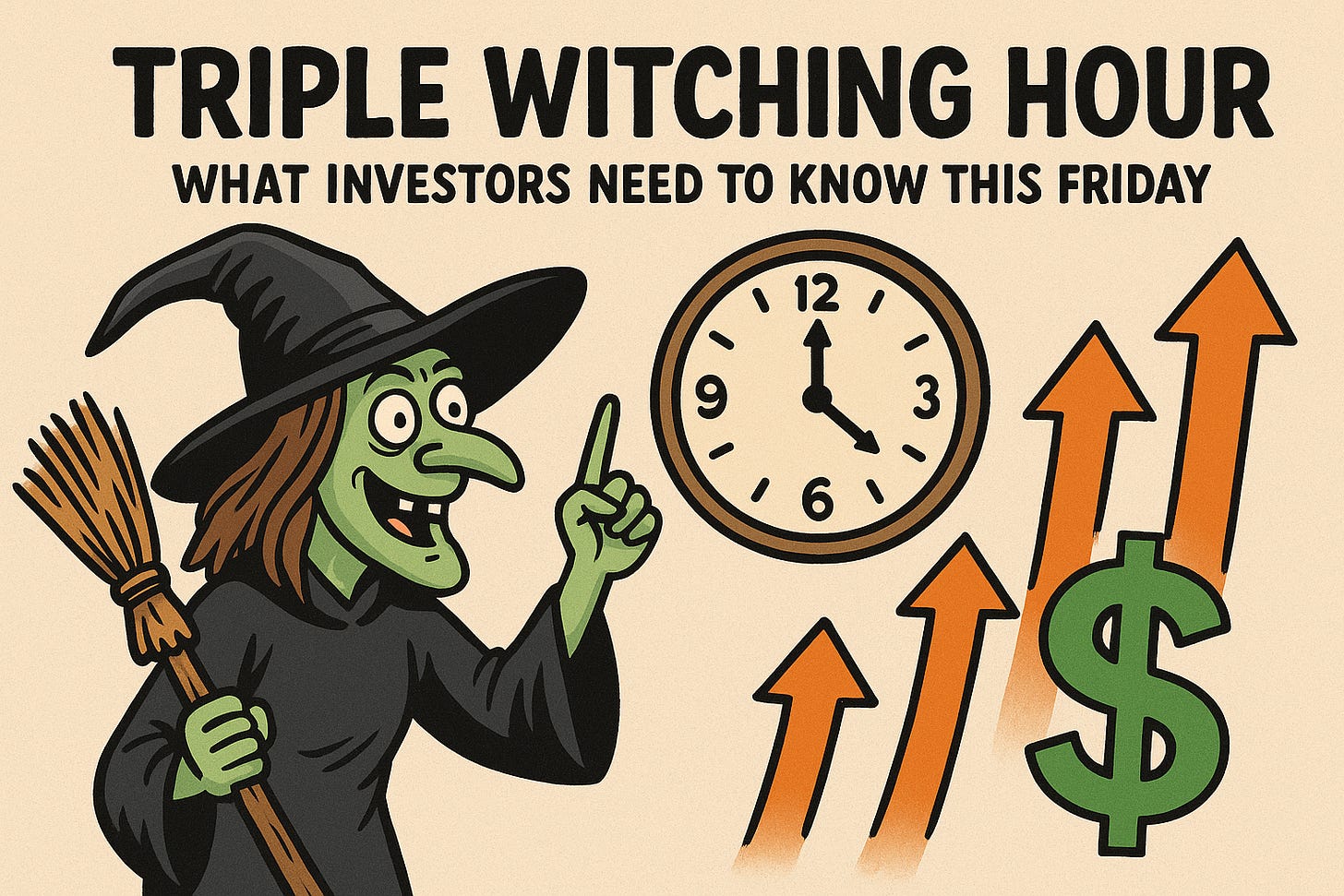Triple Witching Hour Is Here Tonight
The Day Traders Circle on Their Calendar Quarterly
Dear Investor,
Zee here. Since this "triple witching" phenomenon occurs just 4x per year and can significantly impact market behavior, I decided to write a short article about it as it happens tonight...
What is Triple Witching?
Triple witching refers to the simultaneous expiration of three types of derivative contracts on the same day: stock options, stock index options, and stock index futures.
This convergence happens on the third Friday of March, June, September, and December each year.
The term "witching hour" specifically refers to the final trading hour from 3:00 to 4:00 PM Eastern Time, when the most dramatic market activity typically occurs as traders scramble to manage their expiring positions.
It is estimated that during each triple witching session, the notional value of options expiring was about $5.1 trillion. This includes:
• ~$2.6T in index options
• ~$620B in futures options
• ~$635B in ETF options
• ~$600B in single‐stock options
But that doesn’t mean all that money is traded or exchanged in the last hour (“witching hour”). Many contracts are closed before the final hour, and “notional” refers to the underlying value if all expiring contracts are settled, not necessarily actual cash flow.
Why It Matters for Markets
The primary impact of triple witching stems from the massive volume of contracts that need to be settled or rolled over. When multiple derivative (eg. Options) instruments expire simultaneously, it creates a perfect storm of trading activity that can lead to:
Increased Trading Volume: Historical data shows that trading volume can spike dramatically during triple witching days, sometimes reaching levels 50% higher than normal trading sessions.
Heightened Volatility: The rush to close, roll over, or exercise positions can cause sharp price swings in both individual stocks and broader market indices. This volatility is most pronounced during the final trading hour.
Price Distortions: The concentrated buying and selling pressure can temporarily push stock prices away from their fundamental values, creating short-term inefficiencies in the market.
The Mechanics Behind the Mayhem
Several factors contribute to the increased market activity on triple witching days:
Big Funds Rebalancing: Large investors often use these expiration dates to rebalance their portfolios, leading to significant buy and sell orders that can move markets.
Options Exercise Decisions: Traders must decide whether to exercise in-the-money options or let them expire, potentially triggering large stock transactions.
Futures Contract Settlements: Index futures contracts require either physical delivery (though cash settlement is more common) or rolling into future contract months.
Arbitrage Opportunities: The price discrepancies that emerge during high-volume periods can create temporary arbitrage opportunities that sophisticated traders quickly exploit.
Historical Context and Patterns
While each triple witching day is unique, certain patterns have emerged over time. Research suggests that:
Markets tend to be more volatile in the morning hours as traders position themselves ahead of the afternoon expiration
The volatility often subsides after the market close, once positions have been settled
The impact varies significantly based on broader market conditions and economic factors
Implications for Different Types of Investors
Day Traders and Short-Term Traders: May find opportunities in the increased volatility, but should be prepared for unpredictable price movements and wider bid-ask spreads.
Long-Term Investors: Generally advised to avoid making major portfolio changes on triple witching days, as prices may not reflect true underlying value.
Options Traders: Need to pay particular attention to their expiring positions and consider the costs and benefits of exercising versus closing positions.
Disclaimer: All information here is for educational purposes only. This is not financial advice. Please do your own research and speak with a licensed advisor before making any investment decisions. Past performance is not indicative of future returns.


